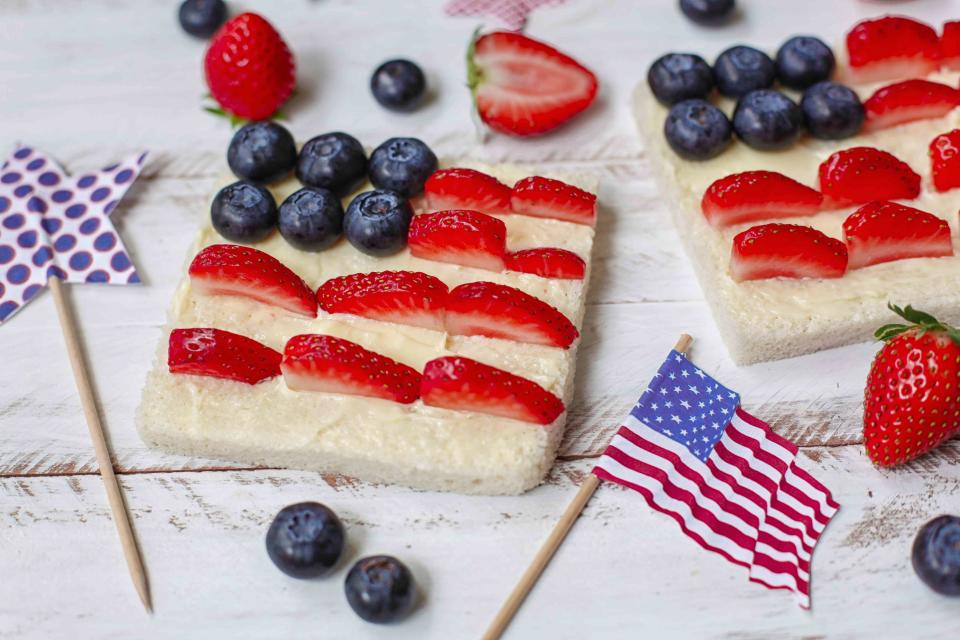Why We Celebrate the Fourth of July
If you need a little refresher course from your American history classes, check out the story behind our Independence Day celebrations.

MAIKA 777/Getty Images
The Fourth of July may be the perfect day to kick back, host a barbecue, and maybe catch some fireworks. But there's a lot more to the celebration than just a good burger or hot dog.
If it's been a little while since your last American history lesson, here's the scoop on why we celebrate the Fourth of July (and how we choose to do it!), and some fun facts about the history of the Independence Day holiday.
Fourth of July History
Because the Fourth of July is also called Independence Day, you might think July 4th marked the beginning of the Revolutionary War. But the battles actually began on April 19, 1775.
Instead, July 4th was when the second Continental Congress voted unanimously to adopt the Declaration of Independence, which formally separated America from the British Empire. (And it featured that oft-quoted "All men are created equal" line, which many incorrectly credit to the Constitution.) The Revolutionary War would continue until September 1783.
The adoption of the Declaration of Independence was marked with a ringing of the Liberty Bell.
The very first Fourth of July celebration came the year after, when Philadelphians marked the occasion with a 13-cannon salute to the colonies, along with food, music, bonfires, fireworks, and even a small military parade, according to John Adams' letter to his daughter.
That was definitely how Adams thought the occasion should be celebrated (although he argued for celebrating on July 2, the day the motion for independence was approved, rather than on the 4th, when the Declaration of Independence was adopted). “[This day] ought to be solemnized with Pomp and Parade, with Shews, Games, Sports, Guns, Bells, Bonfires and Illuminations from one End of this Continent to the other from this Time forward forever more," he wrote to his wife in 1776.
Related:27 Patriotic Fourth of July Quotes to Celebrate Independence Day
But Independence Day celebrations in earnest began after the War of 1812, with the Fourth of July officially earning a spot as a federal holiday in 1870.
One slightly alarming Fourth of July fact: Several of the Founding Fathers (and past presidents!) passed away on July 4th in later years. Both John Adams and Thomas Jefferson died within hours of each other on 1826—the 50th anniversary of the adoption of the Declaration of Independence. James Monroe, the last President who was a Founding Father, died on July 4th, 1831.
On the other hand, Calvin Coolidge, the 30th U.S. President, was the only one that was born on the Fourth of July.
Why Do Many Americans Celebrate the Fourth of July With Barbecues and Fireworks?
Booming explosives have been a part of the Fourth of July celebration since the very beginning. (Remember those cannon salutes and fireworks?) But now, they're usually a lot more colorful and definitely don't include cannonballs (other than the jumping-into-the-pool variety). The Fourth of July fireworks aren't going anywhere, either—spending on sparklers and other at-home fireworks has increased every year, with $2.2 billion spent to light up Independence Day in 2021, according to the American Pyrotechnics Association.
But be careful. The Consumer Product Safety Commission reports that there were more than 11,500 emergency room visits due to injuries from fireworks in the weeks surrounding the Fourth of July, with 1,100 of them due to sparklers.
Since barbecues and cookouts are a popular way to celebrate the holiday, it's no surprise that 59 percent of Americans plan to host or attend a July 4th picnic or barbecue.
Related:14 Grilling Hacks That Will Make You Look Like a Pro
Burgers and hot dogs on the grill are a Fourth of July menu essential, even if they likely weren't part of that original Fourth of July feast. Americans eat 150 million hot dogs on the Fourth of July, and a few years back, USA Today estimated that 375 million burgers are consumed at barbecues across the country.
Common July 4th side dishes, such as corn on the cob and potato salads take advantage of all that great summer produce—and feature foods that are native to the Americas, too.
Red, white, and blue decked desserts are also a July 4th tradition for many, although those were popularized in the 20th century. (You can check out a few of our favorite Fourth of July desserts—including a gorgeous red-white-and-blue trifle.)
As for Fourth of July cocktails, you might want to raise a glass with a rum-based drink. Apparently, George Washington offered his troops a double ration of rum on July 4th, 1778, so they could toast to their freedom.
For more Real Simple news, make sure to sign up for our newsletter!
Read the original article on Real Simple.

